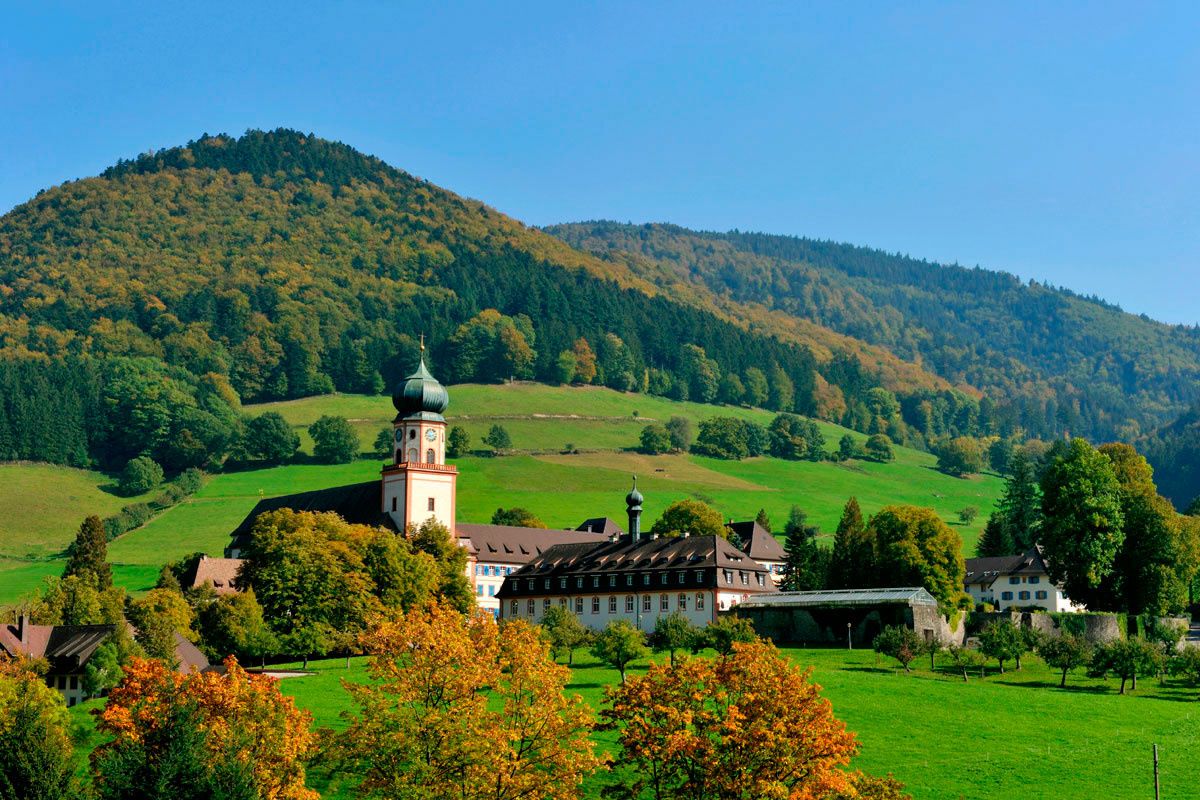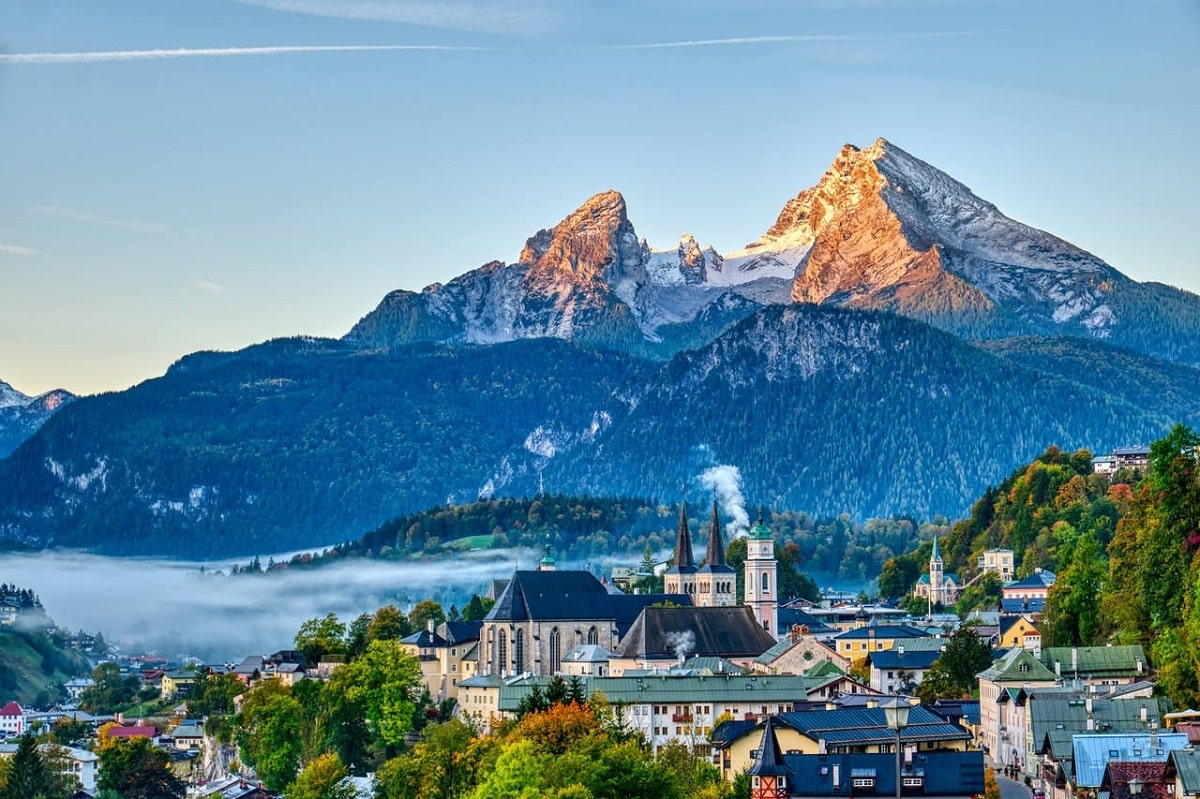
The Bavarian alps, located in southern Germany, are a mountain range with unique characteristics that attract millions of visitors every year. They are rich in flora and fauna and host incredible landscapes.
For this reason, we are going to dedicate this article to tell you all the characteristics, flora, fauna and origin of the Bavarian Alps.
Key features

Here are some of the most notable features of the Bavarian Alps:
- Impressive landscapes: The Bavarian Alps are known for their landscapes of towering mountains, crystal clear lakes and dense spruce forests. The region is home to some of Germany's highest peaks, such as the Zugspitze, Watzmann, and Hochkönig.
- Winter sports: The Bavarian Alps are a popular destination for winter sports. With numerous ski, snowboard, and sledding trails, visitors can enjoy the snow throughout the winter season.
- Summer tourism: In the warmer months, the Bavarian Alps offer a wide variety of outdoor activities, including hiking, climbing, mountain biking, and rafting.
- alpine villages: The region has many picturesque alpine villages with traditional Bavarian houses and cobbled streets. One of the best known towns is Garmisch-Partenkirchen.
Origin of the Bavarian Alps

Its origin dates back to the Mesozoic geological era, about 250 million years ago, when Europe was covered by a shallow sea called the Tethys. During this period, tectonic forces caused the uplifting and folding of the earth's crust, leading to the formation of the first alpine mountains. Over time, erosion caused by winds, rain, and melting glaciers shaped the surface of the Bavarian Alps, creating its impressive landscapes.
The formation of the Bavarian Alps occurred in several stages. In the Triassic, about 250 million years ago, a mountain range stretching from North Africa to central Europe began to form. During the Jurassic, about 200 million years ago, The African tectonic plate collided with the European tectonic plate, causing the Alps to rise.
In the Cretaceous era, about 100 million years ago, the Alps underwent a new uplift phase, which led to the formation of the highest peaks. During the last ice age, which ended around 10.000 years ago, glaciers covered much of the Bavarian Alps, giving rise to impressive valleys and lakes.
Flora and fauna of the Bavarian Alps
This region is home to a variety of habitats, from alpine meadows to coniferous forests and glacierss, which makes it an ideal place for wildlife. Among the animal species that can be found in the Bavarian Alps, stand out deer, wild boar, foxes, badgers, weasels and hares. The Bavarian Alps are also home to various predators such as wolves, lynxes and brown bears, although their presence is becoming rarer.
Trout, crayfish and other aquatic animals can be found in the streams and rivers that flow through the Bavarian Alps. A variety of birds can be found in the alpine meadows and forests, including capercaillie, golden eagle, eagle owl, woodpecker and great spotted woodpecker.
Regarding flora, the Bavarian Alps have a wide variety of plants and trees. Alpine meadows are full of wild flowers, including the edelweiss, the national flower of Austria. In forests, the dominant trees are spruce, pine, and birch. You can also find tree species such as maple, oak and ash.
In addition to the diversity of flora and fauna, the Bavarian Alps are also a popular location for outdoor sports such as hiking, skiing, snowboarding, and climbing.
Economic importance

This region is a popular tourist destination for lovers of nature, winter sports and traditional Bavarian culture. From an economic point of view, the Bavarian Alps are an important source of income for the region and the country. Tourism is the main industry in the area, attracting millions of visitors each year. These tourists contribute significantly to the local economy, spending money on hotels, restaurants, tourist activities, and souvenirs.
In addition to tourism, the Bavarian Alps also have a strong presence in Germany's food and beer industry. The region is famous for its cheeses, such as Emmental cheese and Bergkäse cheese, and for its beers, such as the famous Oktoberfest beer.
Another important industry in the region is agriculture, which is concentrated in the lowlands around the Alps. Local farm products include fruits, vegetables, and meats, which are sold both in the region and in other parts of Germany.
Finally, the Bavarian Alps are a region rich in natural resources, such as water, wood and stone. These resources are used in a variety of industries, such as construction, hydroelectric power production, and furniture manufacturing.
the bavarian alps they are of significant economic importance to the region and the country as a whole. The combination of tourism, food and agricultural industries, and natural resources make this region an important economic engine for Germany.
Tourist activities in the Bavarian Alps
As for tourist activities, the region offers a wide variety of options for visitors. During the winter, winter sports are very popular in the region, including skiing, snowboarding, ice skating, and sledding. There are many ski resorts in the Bavarian Alps, which attract skiers and snowboarders from all over the world.
During the summer, outdoor activities are a great attraction for tourists. Hiking, biking, climbing and rafting are just some of the activities available in the Bavarian Alps. Additionally, the region boasts numerous lakes, rivers, and waterfalls, which are popular for swimming, canoeing, and fishing.
In addition to outdoor activities, the Bavarian Alps also They are famous for their historic cities and charming towns. Munich, the capital of Bavaria, is a vibrant and cosmopolitan city that is famous for its beer, its architecture and its culture. Other major cities in the region include Nuremberg, Augsburg, and Regensburg, all with rich history and cultural heritage.
The towns, on the other hand, are famous for their traditions and picturesque atmosphere. Visitors can explore towns such as Garmisch-Partenkirchen, Berchtesgaden, and Oberammergau, where traditional thatched-roof houses, Baroque churches, and local farmers' markets can be found.
Lastly, we cannot forget the famous Munich beer festival, the Oktoberfest, It attracts thousands of visitors every year. This celebration is one of the largest and most famous in the world, and is a great opportunity to enjoy Bavarian beer, food, and culture.
I hope that with this information you can learn more about the Bavarian Alps and their characteristics.